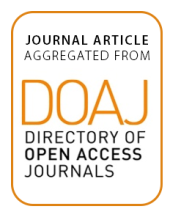/ library resources
Showing items 1 through 7 of 7.The Conservation Reserve Program (CRP) is a voluntary set-aside program in the United States designed to amelioratesoil erosion, control crop overproduction, enhance water quality, and provide wildlife habitat by replacing crops with other forms of land cover.
This paper takes the move from the uncertainty surrounding ecosystem thresholds and addresses the issue of ecosystem-state assessment by means of ecological integrity indicators and ‘ecological risk‘.
Cities are not socially homogenous, but divided into socially and structurally differentiated sub-units. Likewise, the individuals of a community, city or neighbourhood present specific behavioural patterns and uses with respect to their public green areas.
Demographic change suggests substantial effects on future societal demands on agricultural landscape use and thus on rural areas.
Topography and relief variability play a key role in ecosystem functioning and structuring. However, the most commonly used concept to relate pattern to process in landscape ecology, the so-called patch-corridor-matrix model, perceives the landscape as a planimetric surface.
Climate impact scenarios for agriculture usually consider yield development, landscape water balance, nutrient dynamics or the endangerment of habitats separately.
In this paper, 1) a delineation of main theoretical, methodological and applicative issues of landscape ecology, 2) a comparison between landscape and ecosystem ecology, 3) a critical overview of actual limits of landscape ecology, are depicted.
Land Library Search
Through our robust search engine, you can search for any item of the over 73,000 highly curated resources in the Land Library.
If you would like to find an overview of what is possible, feel free to peruse the Search Guide.

